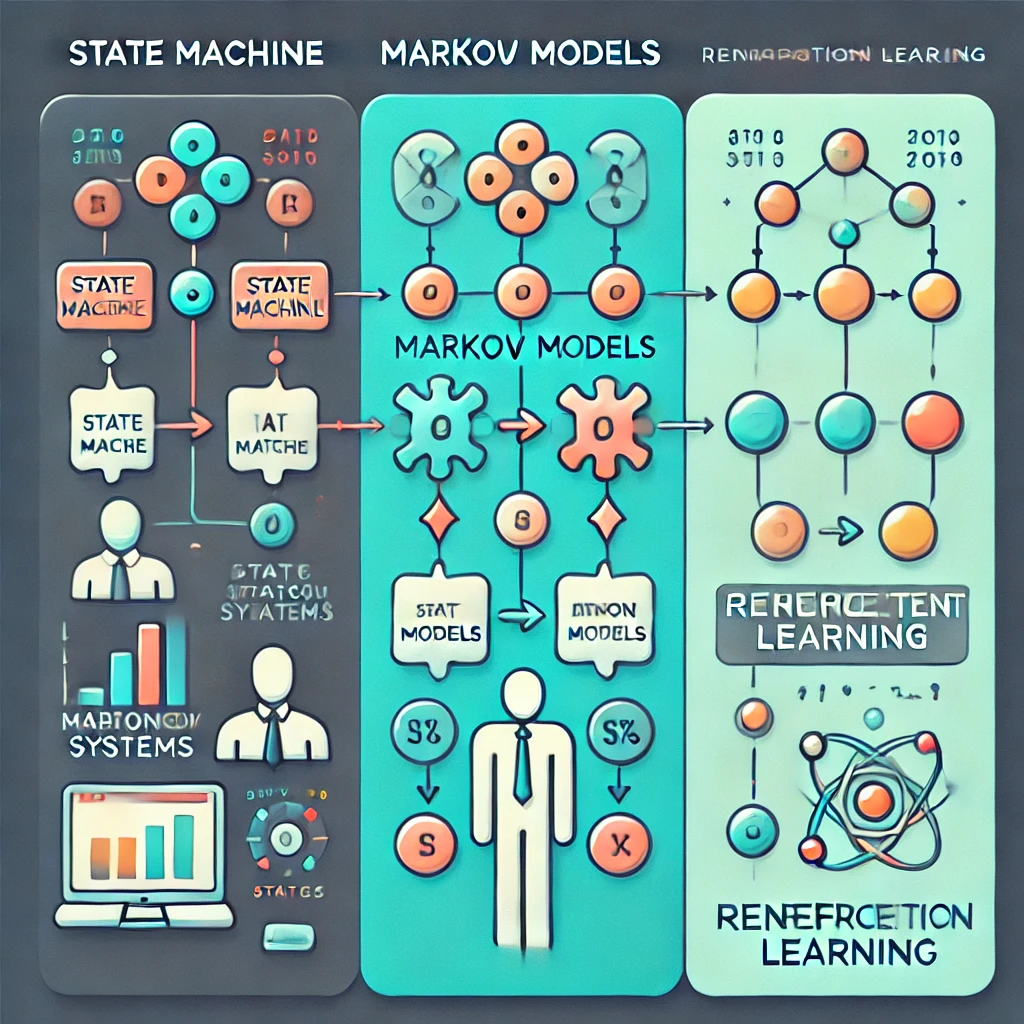In artificial intelligence (AI), different modeling techniques are used depending on the nature of the system—whether it’s deterministic, probabilistic, or involves learning from experience. State machines, Markov models, and reinforcement learning each have unique strengths and are suited for specific types of problems. Here’s a comparison of their key values, advantages, and features.
1. Deterministic: State Machine
A state machine is a deterministic model where the system is always in a clearly defined state, and transitions between states are triggered by specific inputs. State machines are rule-based and offer precise control over how a system behaves.
Key Features:
- Deterministic: The next state is uniquely defined by the current state and input.
- Finite states: A limited number of possible states and transitions.
- Rule-driven: The system transitions are predefined and explicit.
Advantages:
- Simplicity: Easy to implement in systems with clear rules.
- Predictability: Every state and transition is known, providing transparency.
- Control: Ideal for applications requiring precise, controlled outcomes, such as automation or robotics.
Limitations:
- Limited adaptability: Unsuitable for dynamic environments or those with uncertainty.
2. Probabilistic: Markov Model
A Markov model is a probabilistic approach where transitions between states depend on probabilities. The next state is determined solely by the current state, and randomness plays a central role.
Key Features:
- Probabilistic transitions: State transitions occur based on predefined probabilities.
- Markov property: The next state depends only on the current one, not past states.
- Uncertainty modeling: Captures stochastic behavior, making it useful in unpredictable environments.
Advantages:
- Handling randomness: Great for modeling systems with inherent uncertainty.
- Simplicity: Focuses on current states, simplifying the representation of complex systems.
Limitations:
- Memoryless: Assumes no influence from previous states, which can limit its application in more complex environments.
3. Reinforcement Learning
Reinforcement learning (RL) involves an agent learning to make decisions by interacting with an environment and receiving feedback in the form of rewards or penalties. The agent gradually improves its behavior to maximize long-term rewards.
Key Features:
- Agent-environment interaction: The agent learns by taking actions and receiving feedback.
- Learning from experience: The system adjusts over time based on past successes or failures.
- Adaptability: RL can handle complex, dynamic environments.
Advantages:
- Flexibility: RL can adapt to environments where rules are unknown or constantly changing.
- Scalability: Can handle complex tasks like robotics, gaming, or autonomous systems.
- Learning capacity: Capable of optimizing behavior over time, even in uncertain environments.
Limitations:
- Data-intensive: Requires extensive training and computational resources.
- Slow learning process: Finding optimal policies can take a significant amount of time.
Summary
- State machines are deterministic, rule-based models best suited for simple, predictable systems.
- Markov models introduce probabilistic transitions and are ideal for systems with inherent randomness and uncertainty.
- Reinforcement learning allows for adaptive learning in complex environments, where agents learn optimal strategies through experience.
Each approach has its own value depending on the complexity, uncertainty, and adaptability required by the system.






Comments are closed.